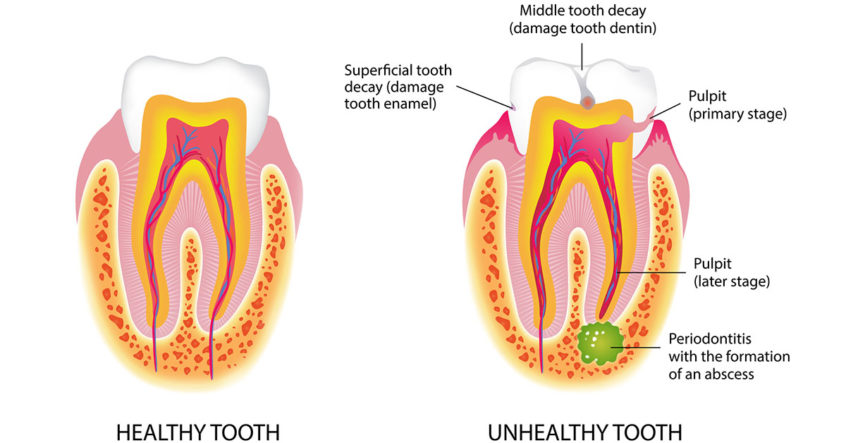Nearly everyone has heard of gingivitis but what might not be as clear is the long-term effects that can occur if it’s not treated promptly. While gingivitis has some symptoms that can signal that there’s a problem — gums that are purple or bright red, bad breath, swollen gums or gums that bleed when you floss or brush — there’s another symptom that is so gradual that it’s often overlooked until it’s too late: receding gums.
What are Receding Gums?
When gum recession occurs, the tissue that surrounds your teeth starts to pull away from them. This process causes more of the tooth to be exposed. Left untreated, it could even expose the root of the tooth. Gum recession can also cause damage to the bone that is supporting the tooth. A common dental issue, receding gums affect between 4 and 12 percent of adults in the United States and often goes unnoticed until it reaches the severe stage.
Gingivitis Treatment
As with nearly any other health problem, the sooner you begin treatment for your gum disease, the more options you’ll have at your disposal. Unfortunately, because severe gingivitis is often not noticed until it is quite advanced, you could experience tooth sensitivity and noticeable exposed roots which affect your smile. In these cases, the dental team at GBP Dental might recommend a gingival skin graft. Though this procedure might sound scary, it is an effective gum disease treatment that could help save your tooth.
When you arrive at GBP Dental, our experienced and kind dental team will thoroughly assess your dental needs. There are three different kinds of gum grafts that are used:
- Connective tissue grafts use tissue from the roof of your mouth after a flap has been cut. The tissue is removed from under that flap, and it is stitched to the affected tissue. This is the most common treatment option.
- Free gingival grafts also use tissue from the roof of your mouth, but there is no flap involved. Instead, the tissue is removed directly before being stitched into place.
- Pedicle grafts use the gum tissue that is near the affected tooth to make the repair. A flap is cut away before being pulled over to cover the receding gum and sewn into place.
In some cases, graft material is used from a tissue bank instead of from the patient. Proteins that are designed to stimulate the growth of tissue are sometimes used to encourage the body’s natural ability to do so.
Recovering From a Gingival Graft
After you receive the gum disease treatment, you’ll be able to go home that same day. You might, however, need someone to drive you home, depending on the amount of sedative you’ve had. The amount of pain you experience will also vary on some factors.
Before you leave our office, the dental team at GBP Dental will provide you with complete instructions regarding your diet, follow-up care and what you can expect as far as pain.

